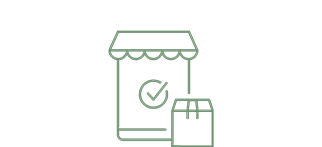

Trailer transport by rail
Our vehicle fleet accounts for nearly one-third of our CO2 emissions. But there’s still room for savings here, namely through transport by rail. We tend to do things somewhat differently at nobilia, however, and this also holds for rail transport. We actually use a hybrid model here. Which means – we load our trailers onto rail wagons. As transport by rail generates much lower CO2 emissions than the same trip by road, this form of transportation is considerably more sustainable. However, it’s only a useful option when large distances have to be covered.
Vehicle fleet with long trailers and a gigaliner
Loading and unloading kitchens requires expertise: everything has its place, nothing can be damaged. Our “white fleet” delivers kitchens directly to customer warehouses. Although this adds value for customers, the disadvantage is that logistics accounts for a large proportion (27.8%) of our carbon footprint. Our long-term strategy is to convert our vehicle fleet to hydrogen power, but we’ve already found ways to significantly reduce diesel consumption: for example, through the use of long trailers. We’re also trialling what’s known as a gigaliner at this time.


Optimised route planning
Long trailers, hybrid transports – at nobilia, we’re already doing many things to reduce the diesel consumption of our truck fleet. However, there’s another very obvious instrument for cutting back on diesel use – optimised route planning. In order to find the most efficient journey at all times, we’re working at nobilia with a service provider on a software that helps schedulers to plan the right route. Our aim is to optimise the process to the greatest possible extent and therefore find the most economical routes in each case compared to our current route planning.







